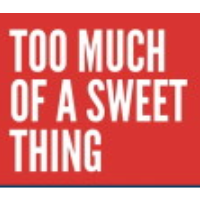UC Study Documents How Sugar Industry Co-Opted Research and Regulation

When researchers at the University of California, San Francisco (UCSF), wanted to find out how the sugar industry made billions of dollars legally selling its corrosive product while convincing the public it was good for them, they had an obvious model—Big Tobacco.
In the case of tobacco, the unexpected delivery of a treasure trove of Brown & Williamson documents to Stanton Glantz at UCSF in 1994 made public for the first time that the tobacco industry had known for decades that its product was a health hazard. UCSF’s sugar expose doesn’t reveal for the first time that the sugar industry hid the danger of its product—everyone knows sugar rots your teeth, makes you fat and contributes to a range of health problems, like heart disease and diabetes.
Instead, it uses 319 internal documents from the International Sugar Research Foundation from 1959-1971 that discuss how the industry manipulated the federal research funding priorities of the National Institutes of Health’s (NIH) U.S. National Institute of Dental Research and shaped national policy for decades to come.
“These tactics are strikingly similar to what we saw in the tobacco industry in the same era,” said Glantz, who is a co-author on the sugar report.
Big Sugar knew that dentists wanted folks to stop eating sugary stuff and they didn’t want public research to be devoted to that subject. So the industry trade group opted for promoting a not-very-effective alternative policy of reducing the dental effects.
The stash of documents, which run 1,551 pages long, was discovered at a University of Illinois public archive by lead author and post-doctoral candidate Cristin Kearns. It establishes the close alignment between the NIH and the industry in drawing up the landmark 1971 National Caries Program, which acknowledged the threat of tooth decay, but said that trying to prevent sugar intake would be ineffective.
An expert panel formed by the sugar industry included all but one member of the government panel selecting research priorities. The national emphasis shifted to dental care after the NIH adopted 78% of the foundation’s research priorities, according to the UC study, agreeing that reducing consumption of sucrose was not practical.
Instead of studies on the health hazards of Hostess Twinkies and Coca Cola, the government funded research on enzymes to combat dental plaque and the discovery of a vaccine against tooth decay.
“It was disappointing to learn that the policies we are debating today could have been addressed more than 40 years ago,” Kearns said of the study. The authors found that most of the funded projects did not produce any large scale results.
–Ken Broder
To Learn More:
Documents Reveal Sugar Industry Influenced National Health Policy (by Anna Almendrala, Huffington Post)
Sugar Companies Have Downplayed the Evidence About Tooth Decay for Decades (by Sam P.K. Collins, ThinkProgress)
“Sugar Papers” Reveal Industry Role in 1970s Dental Program (by Kristen Bole, University of California, San Francisco)
Big Sugar’s Deceitful Past: How Industry Spin Impaired the Government’s Anti-Cavity Program (by Lindsay Abrams, Salon)
‘Sugar Papers’ Show Industry’s Influence in 1970s Dental Program, Study Says (by Lisa Aliferis, KQED)
The Cigarette Papers (by Jon Wiener, The Nation)
California’s Sugar High Costs It Hundreds of Millions for Healthcare (by Ken Broder, AllGov California)
Sugar Industry Influence on the Scientific Agenda of the National Institute of Dental Research’s 1971 National Caries Program: A Historical Analysis of Internal Documents (by Cristin E. Kearns, Stanton A. Glantz and Laura A. Schmidt, University of California, San Francisco)
- Top Stories
- Controversies
- Where is the Money Going?
- California and the Nation
- Appointments and Resignations
- Unusual News
- Latest News
- California Forbids U.S. Immigration Agents from Pretending to be Police
- California Lawmakers Urged to Strip “Self-Dealing” Tax Board of Its Duties
- Big Oil’s Grip on California
- Santa Cruz Police See Homeland Security Betrayal in Use of Gang Roundup as Cover for Immigration Raid
- Oil Companies Face Deadline to Stop Polluting California Groundwater





